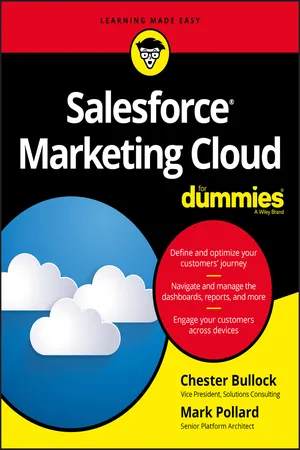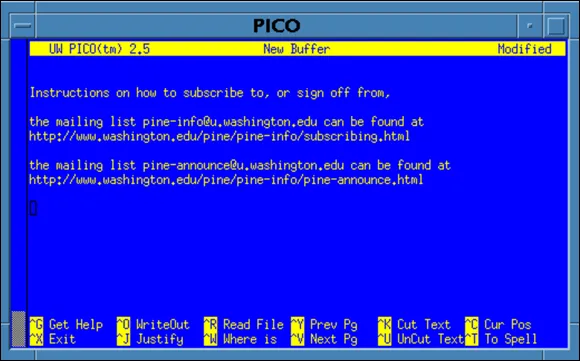
- English
- ePUB (mobile friendly)
- Available on iOS & Android
Salesforce Marketing Cloud For Dummies
About this book
Salesforce Marketing Cloud: Take your digital marketing on a journey!
Everything seems to be moving to the cloud these days—and digital marketing is no exception! Salesforce Marketing Cloud For Dummies guides you through the use of Salesforce's exciting suite of cloud-based digital marketing solutions, which have the power to help you plan, personalize, and optimize your customers' journey. Written by a leader of the Salesforce training and development team, Salesforce Marketing Cloud users will find essential information on using the suite of tools and tips and tricks that only an insider would be able to share. With easy-to-follow instructions, this guide helps you discover how to incorporate your data sets into the tools to create models, campaigns, and customer maps that enable you to create a positive experience for your customers.
As Salesforce.com's multi-channel digital marketing platform, the Salesforce Marketing Cloud focuses on helping you manage one-on-one customer journeys. Leveraging a variety of features, this suite of tools offers email marketing, mobile marketing, social media marketing, content and messaging, predictive intelligence, and more. Your ability to navigate these features and functions will determine your digital marketing campaign's success, so it's critical that you make the most of this tool!
- Navigate and manage the Salesforce Marketing Cloud
- Define and understand your customers' journeys—and how you fit into them
- Engage your customers across devices, ensuring consistent communication
- Use predictive data to optimize engagement
Salesforce Marketing Cloud For Dummies helps you make the most of your investment in the digital marketing world!
Frequently asked questions
- Essential is ideal for learners and professionals who enjoy exploring a wide range of subjects. Access the Essential Library with 800,000+ trusted titles and best-sellers across business, personal growth, and the humanities. Includes unlimited reading time and Standard Read Aloud voice.
- Complete: Perfect for advanced learners and researchers needing full, unrestricted access. Unlock 1.4M+ books across hundreds of subjects, including academic and specialized titles. The Complete Plan also includes advanced features like Premium Read Aloud and Research Assistant.
Please note we cannot support devices running on iOS 13 and Android 7 or earlier. Learn more about using the app.
Information
Getting Started
Introducing the One-to-One Customer Journey



The Dawn of the Customer Journey
Early email marketing

Table of contents
- Cover
- Title Page
- Table of Contents
- Introduction
- Part 1: Getting Started
- Part 2: Utilizing Data
- Part 3: Marketing Cloud Builders
- Part 4: Marketing Cloud Studios
- Part 5: Mapping the Customer Journey
- Part 6: The Part of Tens
- About the Authors
- Connect with Dummies
- End User License Agreement